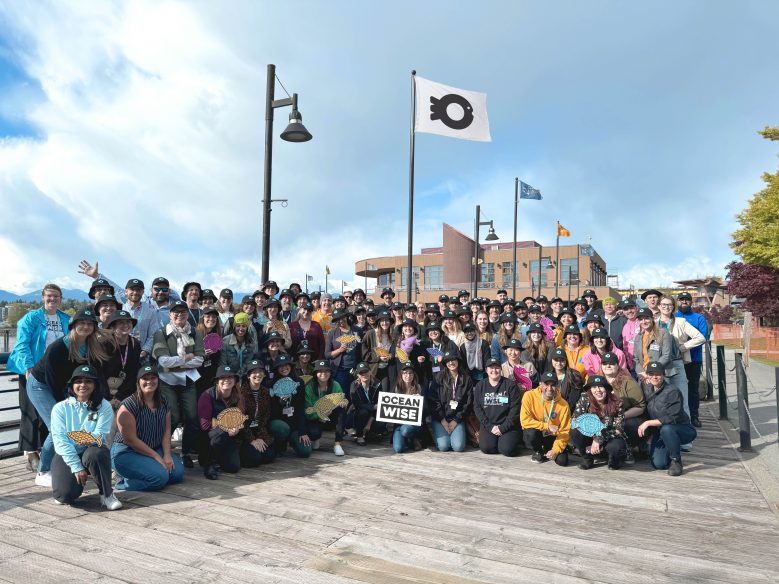
Weekly Ocean News
Ecosystems and Biodiversity
Researchers recently discovered why whale sharks tend to congregate in a small number of sites. It turns out that these congregation sites have a similar topography of shallower waters near a steep drop, which allows whale sharks to feed on upwelling currents, filled with plankton and small crustaceans, and spend time in shallower, warmer water. However, shallow water does pose a risk from boat strikes and fishing boats. Protecting whale shark congregation sites could help the declining population. Via Eurekalert!
California’s Scott Valley once had a complex ecosystem of wetlands and fish spawning grounds, created by beaver dams. This ecosystem collapsed in the 1930s when the beavers were trapped and hunted. Now, fish ecologists are building artificial dams using posts and woven wicker walls. They found that as soon as they did this, beavers moved in and completed the job for them, and the streams are once again full of salmon fry and steelhead. Via Science Magazine
Sustainable Fishing
 Fishing on the high seas is mostly unregulated and prone to over-fishing and environmental abuse. But that isn’t the only downside, it turns out. New research has shown that governments cover a significant portion of the industry’s costs through direct subsidies or tax breaks, supporting an otherwise unprofitable industry. Via National Geographic
Fishing on the high seas is mostly unregulated and prone to over-fishing and environmental abuse. But that isn’t the only downside, it turns out. New research has shown that governments cover a significant portion of the industry’s costs through direct subsidies or tax breaks, supporting an otherwise unprofitable industry. Via National Geographic
Sea cucumbers are a common ingredient in Asian cuisine, but overharvesting can harm this important guardian of reef health. Research in Fiji demonstrated that a large population of sea cucumbers keeps oxygen levels on the reef stable, even when temperatures rise. In contrast, areas with no sea cucumbers suffered a 63% reduction in oxygen levels as temperatures rose. The creatures also remove organic matter after flooding. Via Wildlife Conservation Society
Setting fishing quotas is tricky business. Set them too high, you run out of fish. Set them too low, you starve the fishing industry. Fisheries and Oceans Canada, the federal department in charge of fishing policy, has been struggling to set the quotas for the cod fishery off Newfoundland and Labrador. Stocks are recovering following a moratorium on fishing in 1992, but the number of northern cod of spawning age in the Canadian North Atlantic is down 30% from just last year. The industry is investing heavily in anticipation of larger quotas, but you know what they say about counting chickens before they hatch…Via Hakai Magazine
Water Quality
Intensive extraction of water from aquifers is known to cause sinkholes and even earthquakes, and now arsenic contamination, according to new research. Aquifers are typically composed of sand or gravel layers sandwiched between clay. As the water is extracted, the “wet” layer shrinks, and arsenic and other minerals can be released from the clay. The research found that there is a strong correlation between the amount of sinkage around a well and the arsenic levels in the water. Via Futurity
Plastic Pollution

The United Nations’ Environment Chief has said that the planet is on the “edge of a global plastic calamity” and called for a “wholesale rethinking of the way we produce, use and manage plastic.” But there is progress. Kenya has banned plastic bags; Sri Lanka has banned Styrofoam, and now India’s Prime Minister Narendra Modi has announced an ambitious pledge to eliminate all single-use plastic in the country by 2022. India has also unveiled a campaign to tackle plastic pollution along its 4,660 miles of coastline. Via The Guardian and Time Magazine
Climate Change
Running computers consumes a lot of energy and cooling them consumes even more. Microsoft is trying out a novel solution in Scotland: sinking a 40-foot long data centre with 864 servers into the ocean off the coast of Orkney. An undersea cable brings in electricity from Orkney’s renewable energy network of wind turbines and carries data from the servers to the shore and the internet. As well as free cooling, there are fewer planning restrictions than land-based data centres. The downside? If a server breaks down within its five-year life cycle, it can’t be repaired. Via Phys.Org
Posted June 15, 2018 by Ocean Wise








